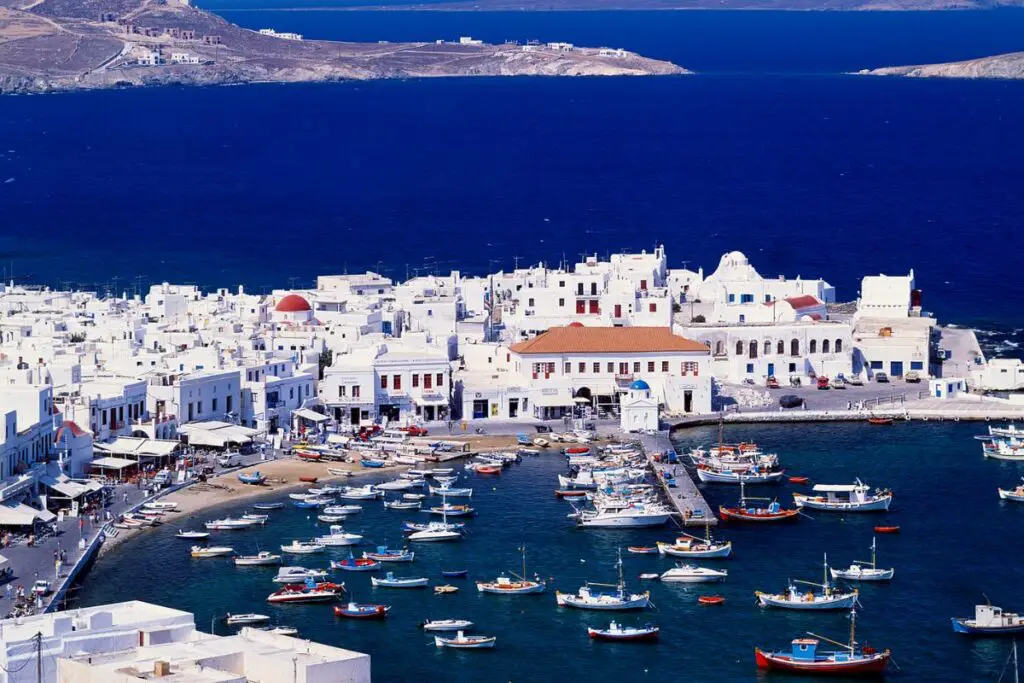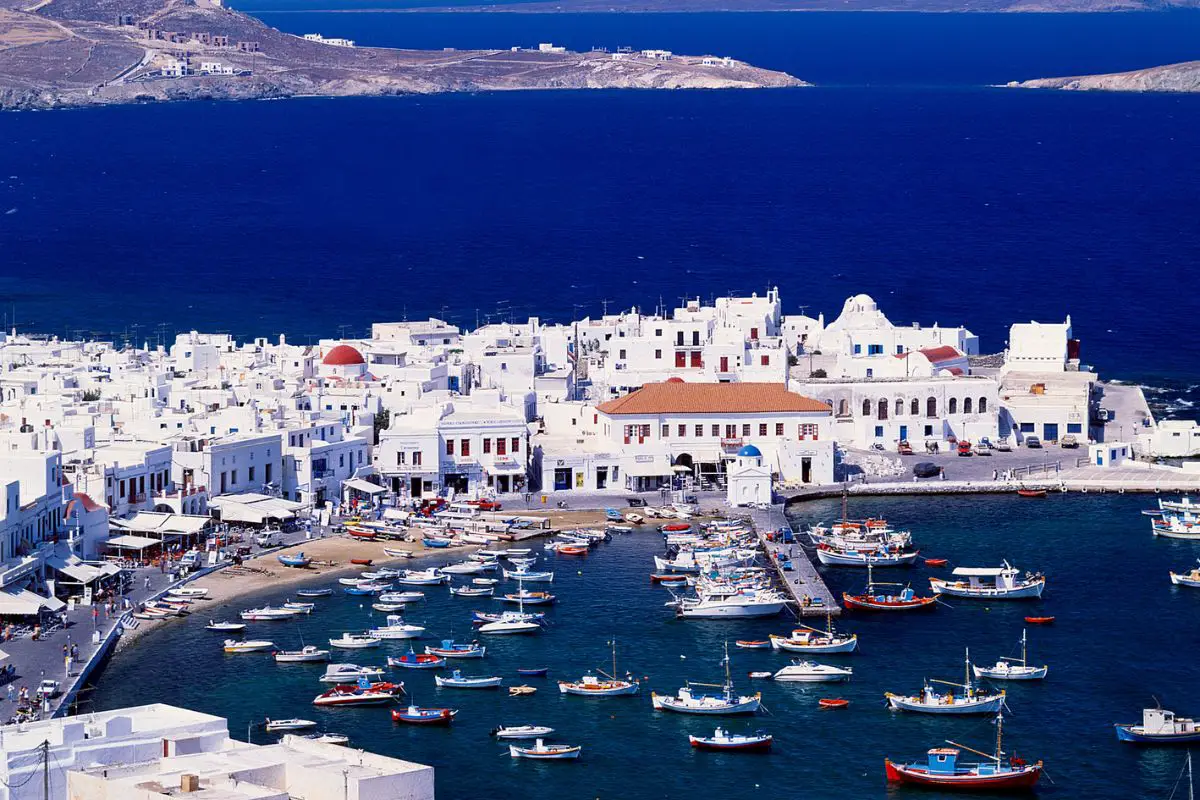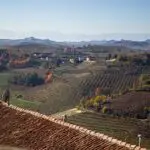Greece’s islands are well-known. And rightfully so, given that Greece is home to more than 6000 of them in various sizes and shapes. Only around 230 of these islands are inhabited, and they are grouped together.
The character of an island varies according to its location and the group of islands to which it belongs, reflecting its distinct history and influences from antiquity to the middle ages to modernity. Each island is endowed with a distinct beauty and interesting locations to explore.

The majority of the Greek islands are located in the Aegean Sea to the east of mainland Greece, with Turkey to the west. Although some of the more well-known islands are in the Ionian Sea, to the east and west of mainland Greece.
Greece’s largest and densely populated island is Crete (Check out The Largest Island In The Mediterranean). In addition, it also happens to be among the most gorgeous. Crete is a vacation spot all by itself since it is big enough to feel like the interior.
Over 160 kilometres of breathtaking beaches may be found in Crete. In terms of size, it ranks fifth in the Mediterranean, just after Sardinia, Corsica, Sicily, Cyprus, and Sicily.
If you want to learn more about this big, beautiful island then just keep reading!
Landscape
The northern coast of Crete is significantly more inhabited than the southern coast, which features mountains that typically plunge directly into the sea and far fewer plains, beaches, and coves. The northern coast of Crete includes modest coastal plains interrupted with bays and beaches.
Mountains form the island’s spine and are its dominant feature. The White Mountains are located in the west of the island, the Idi Mountains are in the island’s center, and the Diki Mountains tower over the surrounding area to the east.
Numerous cave systems, rocky gorges, and expansive plateaux or “basins” surrounded by mountains may all be found within the mountains. Compared to other places of the island, the plateaux retain moisture for longer throughout the year.
Climate
The Mediterranean and the North African climate zones are where most of Crete is located. As a result, Crete has a predominantly Mediterranean climate. Depending on how close to the sea you are, the air can be quite humid, but the winters tend to be pleasant.
Between November and May, snowfall is frequent on the highlands but uncommon in low-lying places. While certain mountain summits are covered in snow for the whole of the year, snow rarely accumulates near the coast and melts within a few hours or minutes (Also check out Does It Snow In Greece?).
But in February 2004, the island saw a genuinely unusual cold wave, which left the entire island covered in snow. Maximum temperatures in the Cretan summer range from the upper 30s to the mid-40s Fahrenheit on average.
Population
It has about 630,000 residents. Greek-speaking, Greek Orthodox people who are Cretans make up the majority of the population. Many of the younger and urban Cretans also speak English, French, or German
Approximately half of the island’s population currently lives in the three largest cities—Chaniá, Irákleio, and Réthymno—with nearly a fourth of them concentrated in the Greater Irákleio area alone.
This demographic movement from rural to urban areas began in the 1970s. Cretans are renowned for their warmth and vigor, and they place a strong emphasis on relationships within families.
Tourism

One of the most well-liked vacation spots in Greece is Crete. 15% of all arrivals in Greece pass through the port and airport of Heraklion, and 20% of all charter flights in Greece are flights to Heraklion. Between 1986 and 1991, there was a 53% increase in hotel beds on the island.
Today, the island’s tourism infrastructure offers a wide variety of accommodations to suit all tastes. These include anything from huge luxury hotels with all the amenities, swimming pools, sports, and recreation, to tiny family-owned flats, camping areas, and more.
Day trips to other islands of the Cyclades are also offered, for example, to Santorini, which takes 2 to 3 hours per ferry route.
Culture
Cretans are fiercely proud of their island and their traditions, and men frequently wear traditional clothing in daily life. Examples include black riding boots (stivania), and vráka breeches tucked into the boots at the knee (sariki). Large mustaches are a common sign of masculinity among men.
A custom that dates back to the time of resistance against the Ottoman Empire is for Cretans to keep firearms in their homes.
On Crete, almost every rural home possesses at least one unregistered firearm. The Greek government has strong regulations governing firearms, and the Greek police have recently made a lot of effort to regulate firearms in Crete, albeit with mixed results.
Cuisine
For its healthfulness, Cretan cuisine has gained recognition on a global scale. Fresh fruits and vegetables, olive oil, just caught seafood that is grilled or baked, and regional cheeses like graviera and myzithra are the foundation of this cuisine.
Homemade wine and desserts like patouda (a tart packed with nuts) and yogurt prepared with sheep’s milk and honey are frequently served with meals.
In contrast to urban life, which combines traditional culture with elements more typical of modern cities—boutiques, coffee shops, cybercafés, movie theaters, popular music clubs, and fast food restaurants—rural life continues to be based on Cretan traditions of farming, stock breeding, fishing, and handicrafts.
History
One of the major attractions in Crete is the ancient Minoan palace of Knossos, which is situated south of Heraklion. First settled in the Neolithic era (7000 BC), Knossos was later rebuilt by the Minoans, who are regarded as the founders of the great European civilization.
At this point, Knossos had acquired sufficient riches and power to qualify as a city. One of the few vestiges of Crete’s ancient civilization still standing are the ruins of Knossos. Today, Knossos is regarded as one of the earliest towns in Europe by many historians.
Summary
Greece’s largest island, Crete, is located in the southern Mediterranean Sea and has a southern coast that faces the Libyan Sea (Also Check out Which Island In The Mediterranean Is The Largest?). The island benefits from being warm virtually all year round as a result of its position, which is great for people like myself who despise the winter.
This can easily give you an idea of the many reasons you should book a ticket to Crete for your next vacation. It is frequently referred to as a universe on an island.
There are lofty mountains, imposing canyons to explore, miles and miles of unspoiled coastline, not one, but four major cities where you can have a blast.
- The Top Restaurants Specializing in Truffle Dishes - August 10, 2023
- Truffle Panna Cotta: A Decadent Dessert Recipe for Truffle Lovers - August 7, 2023
- Truffle Scrambled Eggs: A Luxurious Breakfast Delight - August 7, 2023









